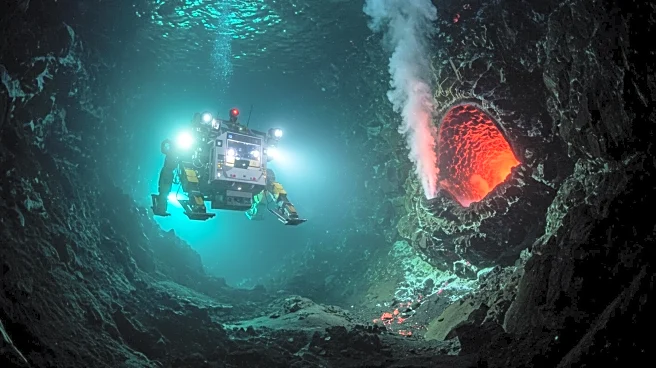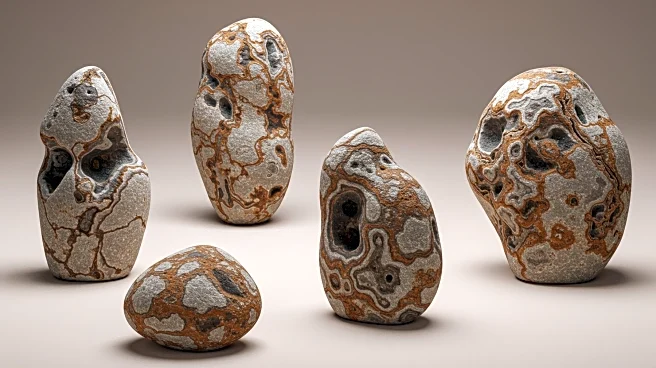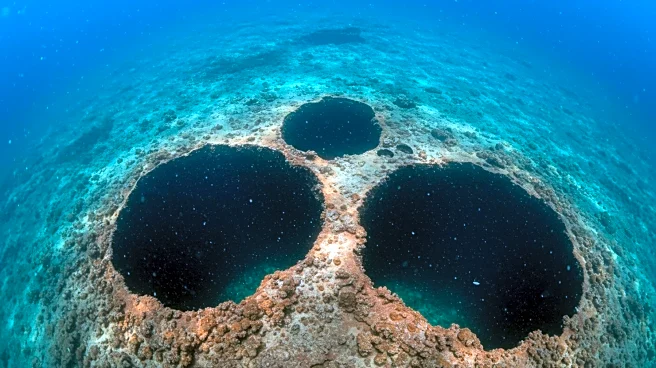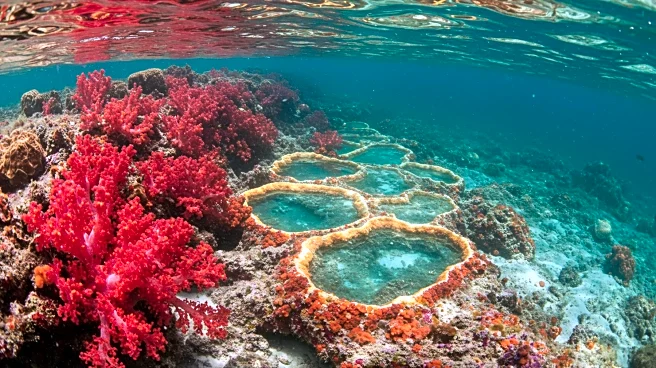What's Happening?
A team of scientists has discovered a vast hydrothermal system in the Pacific Ocean, named the Kunlun system, which is 100 times larger than the Lost City system in the Atlantic Ocean. This newly found system consists of 20 circular craters and spans 4.3 square miles. The Kunlun system's unique geological setting and high hydrogen flux challenge existing assumptions about hydrothermal systems, suggesting that significant hydrogen generation can occur far from mid-ocean ridges. The discovery offers a new perspective on the conditions that may have supported the origin of life on Earth.
Why It's Important?
The Kunlun system's discovery is significant for understanding the origins of life, as hydrothermal vents are believed to be one of the potential birthplaces of life on Earth. The system's size and unique characteristics provide a natural laboratory for studying the conditions that could have led to the formation of life. This research could have profound implications for biology and the search for life beyond Earth, as similar conditions might exist on other planets or moons.
Beyond the Headlines
The ecological potential of the Kunlun system is also noteworthy, as it supports diverse deep-sea life forms that rely on hydrogen-fueled chemosynthesis. This discovery not only enhances our understanding of Earth's biodiversity but also raises questions about the adaptability and resilience of life in extreme environments. The findings could inform conservation efforts and the sustainable management of deep-sea ecosystems.











